The First Nations people living along the Pacific coast of what is now the state of Washington have cultures oriented toward water: the ocean to the west and the many rivers flowing into it. Before the coming of the Europeans, their villages were built near water: the seacoast or a river. Transportation was primarily by water. Distances were measured by how far a canoe could travel in a single day.
As a people oriented toward the sea and the rivers, canoes made from cedar were an important part of the Northwestern cultures. According to Hilary Stewart, in her book Cedar: Tree of Life to the Northwest Coast Indians:
“Nowhere else in the world was a dugout developed to such a degree of sophistication; no other people had a dugout that could match the speed, capacity and seaworthiness – or the elegant grace – of the sleek canoes of the Northwest Coast Indian.”
Writing about Northwest Coast canoes in an 1868 essay reprinted in Indians of the North Pacific Coast: Studies in Selected Topics, Gilbert Sproat reports:
“They are moved by a single sail or by paddles, or in ascending shallow rapid streams, by long poles.”
With regard to paddling the canoes, Gilbert Sproat also writes:
“In taking a seat in a canoe, the paddler drops on his knees at the bottom, then turns his toes in, and sits down as it were on his heels. The paddle is grasped both in the middle and at the handle. To give a stroke and propel the canoe forward, the hand grasping the middle of the paddle draws the blade of the paddle backwards through the water, and the hand grasping the handle pushes the handle-end forward, and thus aids the other hand in making each stroke of the paddle; a sort of double action movement.”
In a moderately sized canoe, two paddlers can make about 40 miles in a day.
The canoe, however, is more than just a utilitarian object to the people of the Northwest Coast. In his gook The Great Canoes, David Neel writes:
“…the canoe was a spiritual vessel that was the object of great respect, from its life as a tree in the forest to its falling to earth as a log and finally its landing on the beach as a finished craft.”
David Neel also writes:
“The canoe is a metaphor for community; in the canoe, as in any community, everyone must work together.”
Each canoe has its own spirit and personality.
The Foss Waterway Maritime Museum in Tacoma, Washington has an exhibit on the Puyallup Indians which includes canoes.

According to the Museum:
“For many coastal tribes, the canoe is a spiritual vessel deserving of greatrespect. Each canoe is a living being. A community learns more about its personality as it brings a tree from its life in the forest to a life of a canoe on the water.”
Making Canoes
According to the Museum:
“All canoes begin with a log from a cedar tree. The process of choosing a tree and carving the canoe requires knowledge and skill. The selection of the tree and the process of transforming it into a canoe are also spiritual occasion and usually accompanied by song and ritual.”
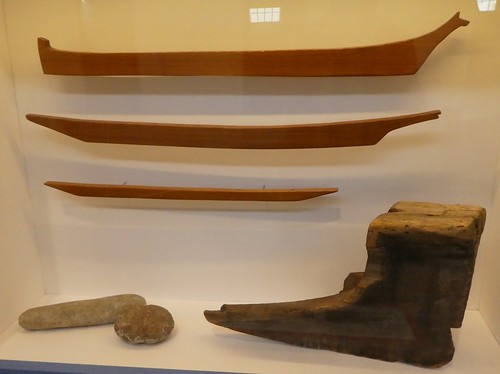 Shown above is an exhibit showing some basic canoe designs and some of the tools used.
Shown above is an exhibit showing some basic canoe designs and some of the tools used.
According to the Museum:
“The canoe has to be shaped with the effects of the final spreading in mind. It requires the knowledge of a master carver, inherited from the experience of thousands of years.”
Replica Whaling Canoe
This 30’ replica of a Quileute whaling canoe features an animal prow and a bowed center. Traditional whaling canoes were made from a single tree, but this replica is made from wood planks.
According to the Museum:
“Whaling was a spiritual practice, requiring months of preparation and ceremony. When the perfect weather arose, eight men paddled out.
Traditionally, whale hunters would exhaust whales until the final blow could be struck. Once dead, the whale’s body was floated alongside the canoe using a series of buoys. Nearly every part of the body was used by the tribe.”




Red Cedar Dugout Canoe
This is an 18’ early twentieth century canoe made by a member of the Nisqually tribe. The canoe was carved from a single red cedar tree.
According to the Museum:
“It has a shovel-nose and appears to have been made for river travel and net fishing. It was later fitted to hold a motor and was used for river racing.”
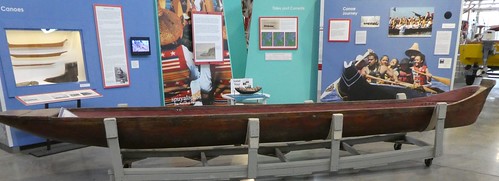
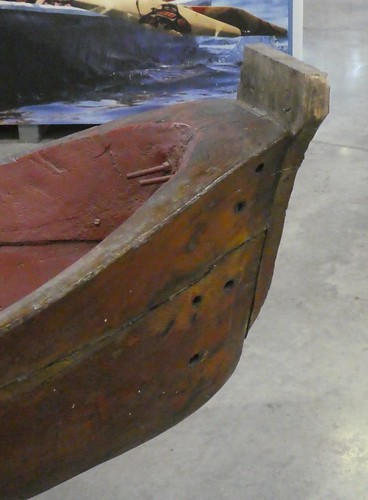 Shown above is the piece which was added so that an outboard motor could be attached to the canoe.
Shown above is the piece which was added so that an outboard motor could be attached to the canoe.

Other Canoes

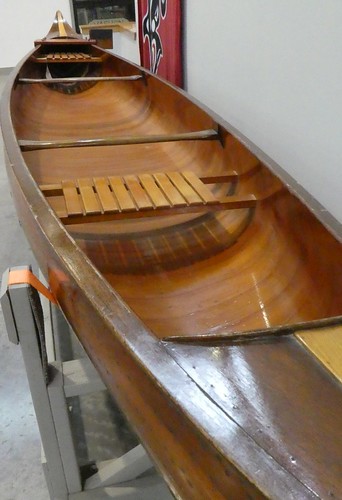
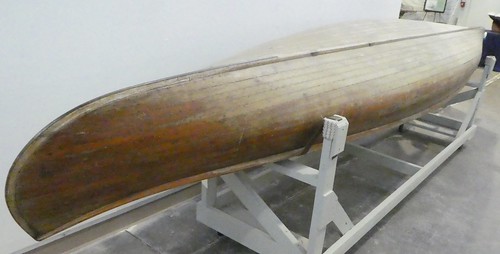

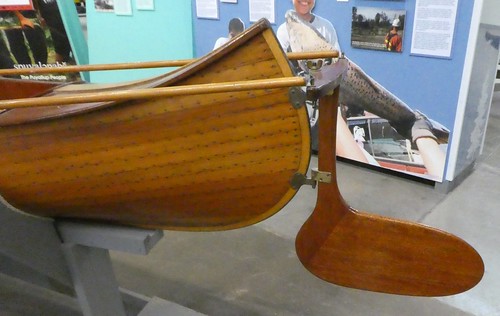
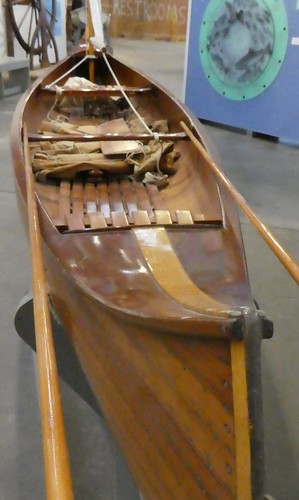

More Indians 101
Indians 101: Northwest Coast Canoes
Indians 101: A Cowlitz canoe (museum tour)
Indians 101: Traditional Whaling
Indians 101: Suquamish Canoes (Photo Diary)
Indians 101: Tulalip Canoes (Photo Diary)
Indians 101: Dugout canoes of the Upper Columbia River (museum tour)
Indians 101: Columbia River canoes (photo diary)
Indians 101: The Northwest Coast Culture Area


